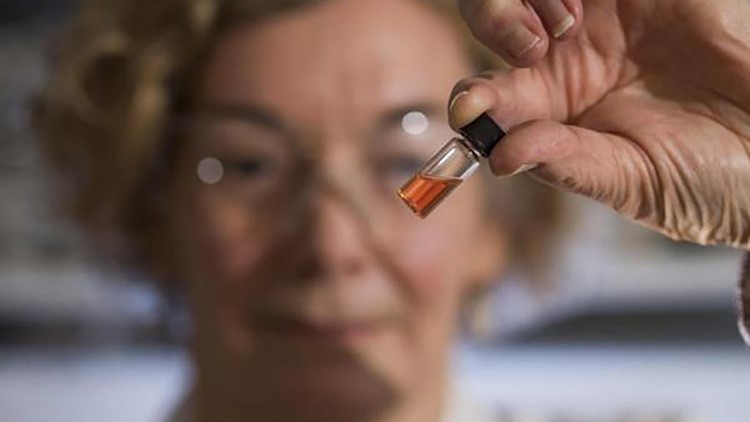The color of bubble gum, flamingos and cotton candy — bright pink — is the world’s oldest color, according to a recent study.
Researchers discovered the ancient pink pigments in 1.1-billion-year-old rocks deep beneath the Sahara Desert in the Taoudeni Basin of Mauritania, West Africa, making them the oldest colors in the geological record.
According to Dr. Nur Gueneli, who discovered the pigments as part of her PhD studies at Australia National University, the bright pink colors are more than 500 million years older than the next oldest known pigments and were produced by ancient ocean organisms.
“The bright pink pigments are the molecular fossils of chlorophyll that were produced by ancient photosynthetic organisms inhabiting an ancient ocean that has long since vanished,” Dr. Gueneli said in a news release.
To discover the pigments, researchers crushed billion-year-old rocks into powder, and extracted and analyzed the molecules of ancient organisms within them.
When diluted, the ancient pigments appear bright pink. But when they’re concentrated, the fossils can range from a blood red to a deep purple, she said.
Implications for ancient life
The oldest color on Earth wasn’t the only discovery to come out of the marine shales found deep beneath the Sahara.
The team of researchers from Australia, Japan and the USA also were able to use the pigments to confirm that ancient marine ecosystems were dominated by tiny cyanobacteria, a type of bacteria that obtains energy through photosynthesis. The discovery, published in a new study, tells us more about the evolution of ancient animals.
“The precise analysis of the ancient pigments confirmed that tiny cyanobacteria dominated the base of the food chain in the oceans a billion years ago, which helps to explain why animals did not exist at the time,” Dr. Gueneli said in the news release.
According to senior lead researcher Dr. Jochen Brocks, an associate professor at ANU, the limited supply of large food particles like algae in these ancient oceans likely restrained the emergence of large, active organisms.
“Algae, although still microscopic, are a thousand times larger in volume than cyanobacteria, and are a much richer food source,” Dr. Brocks said in the release.
Cyanobacterial oceans began disappearing around 650 million years ago, Brock said, which is when algae began rapidly spreading. That algae provided the “burst of energy needed for the evolution of complex ecosystems, where large animals, including humans, could thrive on Earth,” he said.



